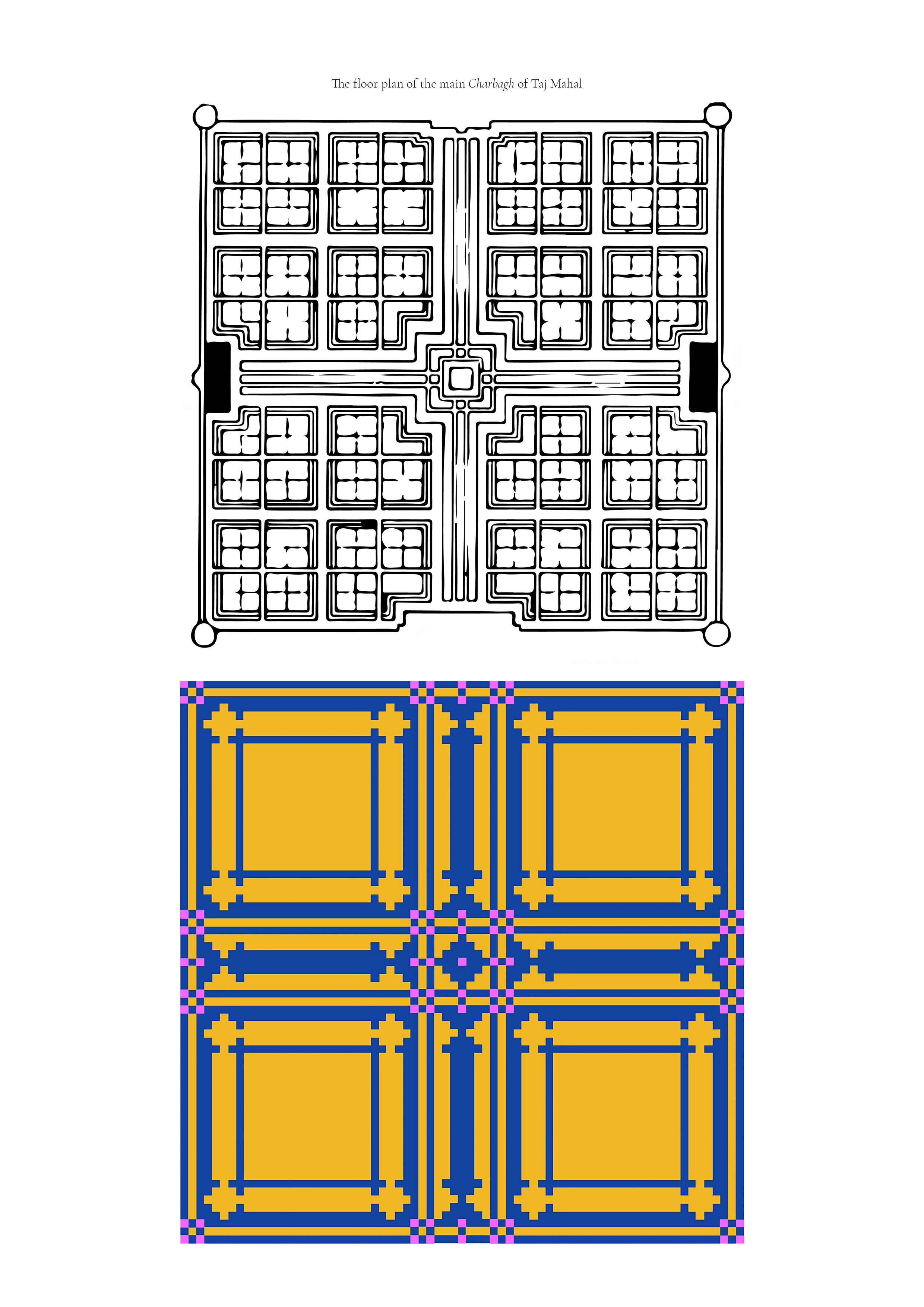The Khes Project : A narrative of the lost khes of Punjab
It has been three years since Rashi and Arjun began research on Khes, employing their textile sensibilities to decode historic, structural and aesthetic aspects about it. They were interested in establishing connections between khes weaving traditions of Punjab and the Partition of India.
Khes is a multipurpose covering cloth used as an everyday commodity by the people of Punjab (both India and Pakistan). It holds cultural importance even today, but the context has changed. In the past, it was woven using yarn that was hand spun by the older women of the family, to be given away to their daughters for dowry. Its making was a manifestation of their love.
What is khes?
As a textile object, khes is a thick piece of cotton textile that was woven in eastern and western parts of Punjab, as well as parts of Sindh. At one time, khes had multiple uses around the home - it was used as a bedcover, or was spread over a talai (a thin form of bedding) when no mattresses were available. It was also used as a shawl, or as a back support when sitting on the floor.
The lost khes
While they were researching the craft, Rashi and Arjun realised that there are three different categories of khes, based on the complexity of the weave used in making the fabric. The most intricate of them, majnu khes, is woven using a compound weave called ‘double-cloth’. It intrigued them the most because they had never heard of it before. While on field, in various parts of Punjab and Haryana, they tried to locate this variety of khes but in vain. Nobody knew about it. People couldn’t even recognise it by looking at the pictures they had for reference.
In 2018, towards the end of their fieldwork, Arjun found this khes at his own home. His mother told him that it belonged to his grandfather and was extremely old. He had carried it with him when he migrated from West Punjab to East Punjab. That is when both of them started looking for Majnu Khes among relatives and family friends.
Majnu khes and Partition
That got them thinking about the complete obliteration of majnu khes, although plenty of examples of saada’ (simple) khes (which is woven with twill structure) were found throughout Punjab and Haryana. Whatever samples of majnu khes were found, they were extremely old and found with people who had migrated during Partition. This was because majnu khes was mostly woven in the western parts of Punjab (present-day Pakistan).
Prior to Partition, there was a flow of various types of khes within the local market. But once the border came into existence, this flow stopped. Majnu khes was also predominantly woven by Muslim weavers, most of whom migrated to West Punjab post Partition.
Design history of majnu khes
Today, most people are not even aware that a different variety of khes weaving tradition exists on the other side of the border. Whatever remains of this particular craft in India are extremely few, brought along by migrating people post Partition. At this point, Rashi and Arjun started working on two different aspects of our project. While she focussed on archiving personal narratives for our oral history documentation, Arjun tried to figure out the secrets of our long lost majnu khes.
Four-fold symmetry
While doing that, I noticed a similarity between the visual language of majnu khes patterns and the floor-plans of the Mughal Charbaghs - gardens from Islamic architecture that were based on four-fold symmetry. And because they were based on four point symmetry, the basic unit of their construction was often a square. This was the weaving technique used to make majnu khes. Furthermore, most of the majnu khes pieces were woven commercially by Muslim weavers who were skilled enough to weave the intricately patterned ‘double-cloth’ fabric.
Possible design inspiration
The fact that they were woven by Muslim weavers could be a reason for majnu khes to be highly geometric in its visual language. Geometry is a very important aspect of Islamic aesthetics.
<refers to images> At the same time, as Rashi researched the various Phulkari traditions as part of her narrative-building, she realised how a lot of Phulkari pieces are based on four-fold symmetry as well. <In the following two images one can make that observation. Both these pieces have been embroidered by Veerpal Kaur, a Phulkari craftswoman from Patiala, who Rashi worked with. One can see how the motif in the blue piece has been divided into four consequent squares just as in a basic Charbagh layout. The other two images of antique Phulkari showcase the fact that such patterning was prevalent in this embroidery craft of Punjab even ages ago.>
Conclusion
The history and craft of the lost majnu khes is a fascinating aspect of Punjab’s material culture. It not only points towards a unique history of this complicated khes but also shows how craft is tied to specific contexts and socio-economic conditions. The Khes Project has brought together design history and people’s narratives in an interesting way, through the complex woven fabric of khes.
References: Latiff, Zainab Abdul, et al. “ A discourse on the Persian Chahar-Bagh as an Islamic Garden.” Journal of the Malaysian Institute of Planners, vol. 15, no. 3, 2017, pp. 123–134.
Photo Credits/ The Khes Project









